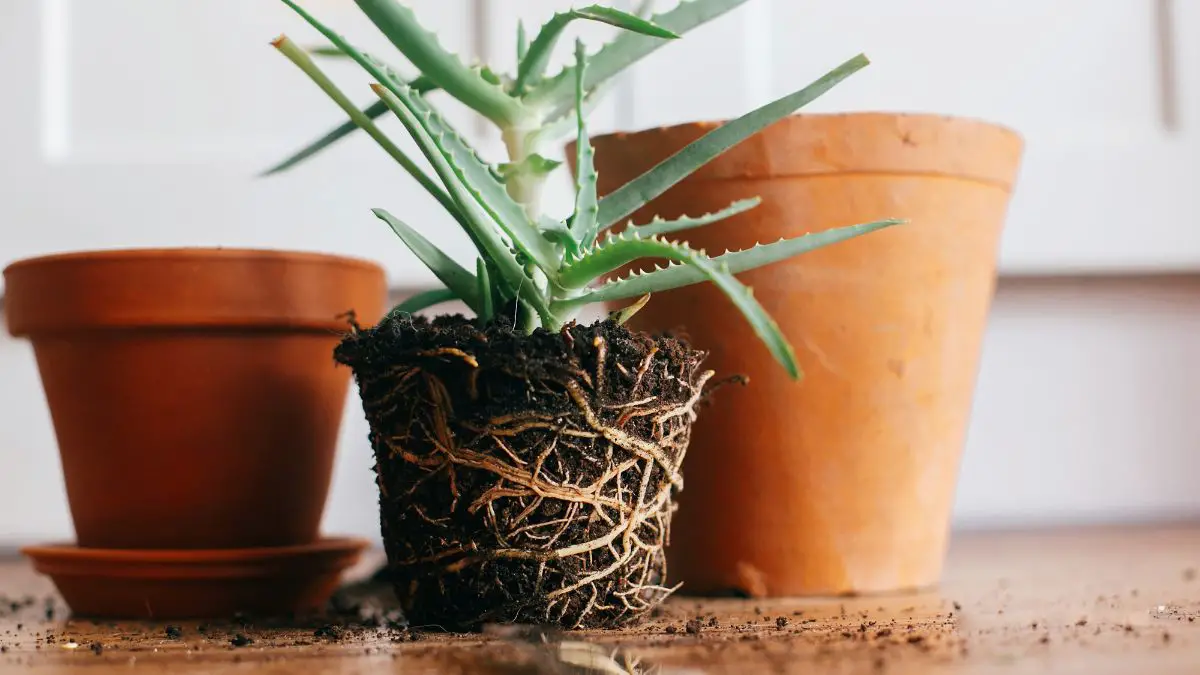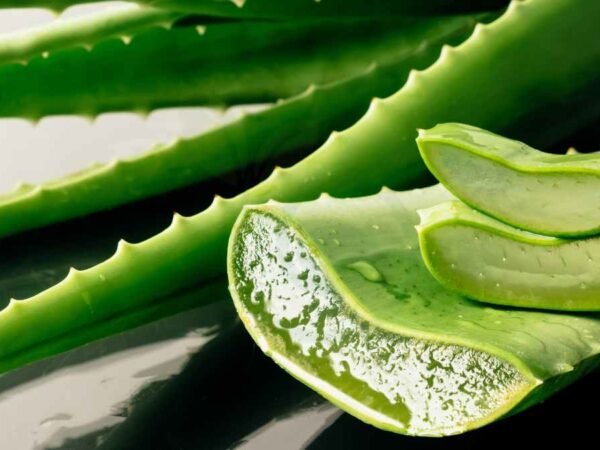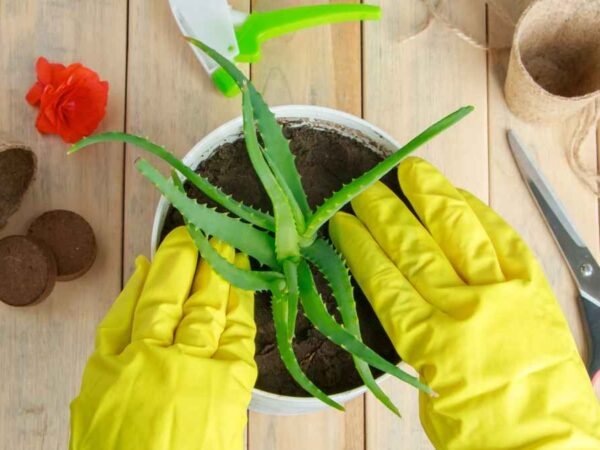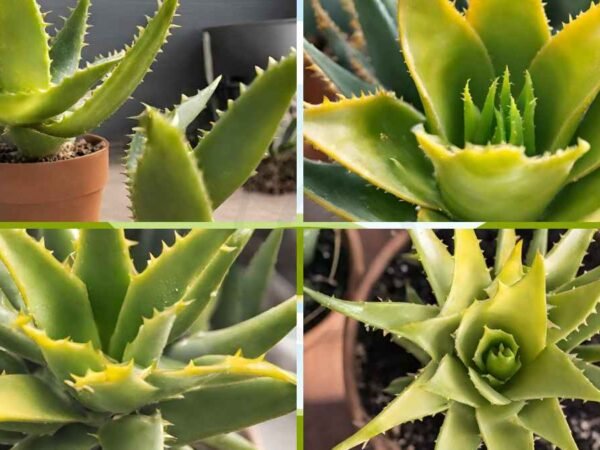Unearthing the mysteries beneath the soil, the intricate world of aloe vera plant roots holds secrets vital for its thriving growth, water, leaf, and humidity. Delving into the depths of these roots reveals a network designed for optimal nutrient absorption and water retention. Understanding the unique characteristics of aloe vera roots is key to nurturing healthy plants and harnessing their beneficial properties.
Discover how these roots revolutionize not only the plant's survival but also their potential to enhance various aspects of our lives.
Key Takeaways
- Understand the importance of healthy roots for your aloe vera plant's overall well-being.
- Follow proper steps to prepare for repotting, ensuring a smooth transition for your plant.
- Use the step-by-step guide provided to repot your aloe vera plant effectively.
- Implement best practices to maintain root health, such as proper watering and soil conditions.
- Troubleshoot common root-related issues promptly to prevent further damage to your plant.
- Consider advanced care tips to take your aloe vera plant's root health to the next level.
Understanding Aloe Vera Roots
Root System Basics
Aloe vera roots are essential for the plant's survival, anchoring it in soil and absorbing water and nutrients. The roots of aloe vera plants consist of a primary root that grows vertically into the soil and lateral roots that spread horizontally. These lateral roots play a crucial role in gathering nutrients from the surrounding soil to support the plant's growth.
Aloe vera roots have adapted to various environments by developing a fibrous structure that allows them to efficiently absorb water and nutrients. This adaptation enables aloe plants with a well-developed root system to thrive in both arid conditions with minimal water availability and well-drained soils. The fibrous nature of aloe vera roots also aids in preventing soil erosion, making them ideal for landscaping purposes.
The primary function of aloe vera roots is to facilitate the uptake of essential nutrients such as nitrogen, phosphorus, and potassium from the soil. These nutrients are vital for the overall health and growth of the plant's root system. By absorbing these nutrients through their roots, aloe vera plants can maintain their succulent leaves and produce beneficial compounds like polysaccharides and antioxidants.
Signs of Healthy Roots
Healthy aloe vera roots exhibit several key indicators that reflect the plant's overall well-being. One prominent sign of healthy roots is their firmness and white coloration. When examining the roots of an aloe plant, look for robust, plump roots that appear white or light beige in color. These characteristics indicate that the roots are actively absorbing water and nutrients.
Another visual cue of thriving aloe vera roots is the absence of rot or damage. Healthy roots should be free from any signs of decay, such as mushy texture or dark discoloration. Inspecting the roots regularly can help prevent issues like root rot, which can severely impact the plant's ability to absorb nutrients effectively.
Maintaining healthy roots is crucial for ensuring the overall health and vitality of aloe vera plants. Healthy roots support robust growth, enhance drought tolerance, and contribute to increased resilience against pests and diseases. By promoting root health through proper watering practices and well-draining soil, you can help your aloe vera plant thrive for years to come.
Preparing for Repotting
When to Repot
Determining the right time to repot your aloe plant is crucial for its health. Factors like root-bound conditions and growth patterns indicate when repotting is necessary. Assess if your aloe plant needs repotting by checking for crowded roots or slow growth.
Choosing the Right Container
Selecting the appropriate pot size and material for aloe plants is essential. The container choice directly impacts root health, affecting overall plant growth. Consider factors such as drainage and providing enough root space when choosing a pot for your aloe plant.
Soil Selection
Exploring the best soil options for aloe vera plants is key to their well-being. Opt for soil that is well-draining, preventing root rot and promoting healthy growth. Understand how different soil compositions can impact the overall health and development of your aloe plant.
Step-by-Step Guide to Repotting
Removing the Plant
To safely remove your aloe plant, gently tilt the container and slide out the root ball. Avoid damaging the roots as you extract the plant. Once removed, inspect the roots for any issues.
Inspecting the Roots
Examine your aloe plant's roots closely for signs of health or problems. Check for any indications of root rot, pests, or damage during this inspection. Remember, root health is crucial for the overall vitality of your plant.
Potting and Soil Tips
When potting your aloe plant, ensure you use the appropriate soil mix. Opt for a well-draining mix to prevent waterlogging and promote healthy root growth. The right soil composition plays a vital role in supporting robust root development.
Best Practices for Root Health
Watering Techniques
To ensure healthy roots, water aloe vera plants properly. Avoid overwatering or underwatering to prevent root rot or dehydration. Adjust watering frequency based on the plant's needs.
Aloe vera thrives in well-draining soil, so moderate watering is key. Test the soil moisture before watering again to avoid excessive dampness. Inconsistent watering can stress the roots.
Maintain a regular watering schedule but adjust during different seasons. During summer, increase watering frequency as the plant absorbs more water. In winter, reduce watering to prevent root issues.
Light Requirements
For optimal root health, provide ample sunlight for your aloe vera plant. Place it in a spot with indirect but bright light for steady growth. Direct sunlight can scorch the leaves.
Aloe vera plants require at least six hours of sunlight daily for robust root development. Insufficient light can lead to weak roots and stunted growth. Rotate the plant occasionally for even exposure.
Excessive shade can hinder photosynthesis, affecting root growth negatively. Monitor the plant's response to light exposure and adjust its position accordingly for healthy root formation.
Fertilizing Tips
Enhance root development by using appropriate fertilizers for aloe vera plants. Opt for balanced fertilizers rich in nitrogen, phosphorus, and potassium to support root growth effectively.
Nutrients like nitrogen aid in green foliage development while phosphorus boosts root growth. Potassium strengthens overall plant health, including robust roots that anchor the plant securely.
Consider using organic fertilizers such as compost or seaweed extracts for a natural approach to nourishing your aloe vera plant's roots. Synthetic fertilizers are also available with specific nutrient ratios tailored to different growth stages.
Troubleshooting Common Issues
Root Rot Prevention
Root rot in aloe vera plants can be prevented by implementing effective strategies. To avoid this issue, ensure proper drainage in the soil to prevent waterlogging, which is a common cause of root rot. Maintain optimal soil moisture levels by allowing the top layer of the soil to dry out between watering sessions. Overwatering is a primary culprit for root rot in aloe vera plants.
One way to identify root rot is by observing symptoms like wilting leaves, yellowing, or mushy roots. If you notice any of these signs, it's crucial to act promptly to save your plant. Regularly inspect your plant's roots for any discoloration or softness, as early detection can help prevent severe damage.
Dealing with Pests
Common pests that can affect aloe vera roots include fungus gnats and mealybugs. To protect your plant from these invaders, consider using natural pest control methods such as neem oil or insecticidal soap. These remedies are effective at keeping pests at bay without harming your plant.
When dealing with pests on your aloe vera plant, it's essential to maintain good hygiene practices around your plant. Remove any dead leaves or debris that could attract pests and create breeding grounds for them. By keeping your plant clean and free from clutter, you can help prevent pest infestations and maintain healthy roots.
Advanced Care Tips
Seasonal Care Variations
Adjust your care routine based on seasonal changes. Understand how temperature and light variations impact aloe roots. Providing optimal care for your aloe plant year-round is crucial for its health.
During warmer months, increase watering frequency to accommodate higher evaporation rates. In contrast, reduce watering in colder seasons to prevent root rot. Ensure proper drainage to prevent waterlogging during rainy periods.
Adequate sunlight exposure is vital for aloe vera's growth. In summer, place the plant where it can receive bright, indirect light. During winter, move it closer to windows for sufficient sunlight exposure.
Maintain consistent temperatures between 60-80°F (15-27°C) throughout the year. Sudden temperature fluctuations can stress the plant and affect root health negatively.
Propagating Aloe Vera
Explore techniques for propagating aloe vera plants from cuttings. Root development in propagated aloe plants occurs within 2-6 weeks after planting cuttings in well-draining soil.
When propagating, ensure the cutting has calloused over before planting to prevent rotting. Place the cutting in soil with adequate moisture and indirect sunlight to encourage root growth.
To promote healthy root development, avoid overwatering newly planted cuttings. Allow the soil to dry out slightly between waterings to prevent root rot.
Propagation allows you to expand your aloe collection or share plants with friends and family. It's an excellent way to create more natural remedies using homegrown aloe vera.
Frequently Asked Questions
Repotting Frequency
Determining how often to repot your aloe vera plant is crucial for its well-being. Consider the growth of the roots and the size of the container. Repotting ensures healthy root development, which directly impacts overall plant growth.
When deciding on repotting, take into account the rate at which the roots are growing. If you notice roots emerging from the bottom of the pot or circling around the root ball, it's time to consider repotting. The container's size also plays a significant role in determining when to repot your aloe plant.
Repotting not only provides more space for root growth but also refreshes the soil, providing essential nutrients for your plant's health. It prevents overcrowding, allowing room for new root growth and better absorption of water and nutrients.
Watering Schedule Adjustments
Adjusting your watering schedule according to your aloe vera plant's needs is vital for maintaining its health. Observe environmental factors like humidity levels and sunlight exposure to tailor your watering routine effectively. By adapting your watering habits, you can promote optimal root development.
To ensure healthy root growth, avoid overwatering as it can lead to root rot. Instead, water your aloe plant thoroughly but allow the soil to dry out between waterings. This helps prevent waterlogged conditions that can harm the roots and overall plant health.
Maintaining a consistent watering schedule based on environmental conditions helps prevent under or overwatering, both of which can stress the plant and affect root health. Adjusting your watering routine during different seasons or weather changes ensures that your aloe vera receives adequate moisture without risking root damage.
Summary
The detailed guide on aloe vera plant roots has equipped readers with essential knowledge on understanding, preparing for repotting, executing the process step-by-step, maintaining root health, troubleshooting common issues, and advanced care tips. By following these recommendations, individuals can ensure the optimal growth and well-being of their aloe vera plants. Remember to prioritize root health through proper repotting techniques and regular maintenance to foster a thriving plant environment. For further inquiries or specific concerns, refer to the FAQ section for additional guidance.
Frequently Asked Questions
What are the signs of root rot in aloe vera plants?
Root rot in aloe vera plants can manifest as wilting, yellowing leaves, mushy roots, or foul odor. To prevent root rot, ensure well-draining soil and avoid overwatering.
How often should I repot my aloe vera plant?
Aloe vera plants typically need repotting every 2-3 years to refresh the soil and provide more space for root growth. Monitor the plant's size and root health to determine when it's time for repotting.
Can I propagate aloe vera from its roots?
Yes, aloe vera can be propagated from offsets (pups) that grow near the main plant's base. Separate these offsets with some roots attached and plant them in well-draining soil to establish new plants.
Should I trim the roots when repotting an aloe vera plant?
Trimming roots during repotting is not necessary for aloe vera plants unless you notice any damaged or rotted roots. Gently untangle any overcrowded roots but avoid excessive trimming to maintain root health.
How deep should the pot be for an aloe vera plant?
Choose a pot that is shallow but wide enough to accommodate the aloe vera plant's spreading root system. A depth of around 6-8 inches should be sufficient, allowing room for proper drainage and root growth.
Image Source: Paid image from CANVA





